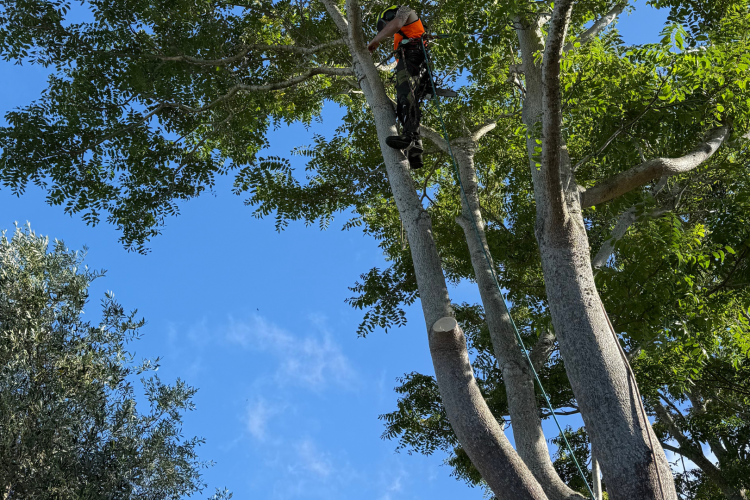February Tree Care in New Zealand: Preparing for Autumn

At Beaver Tree Service, we understand the unique needs of New Zealand’s trees and are here to guide you on the best practices for late-summer tree care.
- Assess Tree Health
The long, dry summer may have taken a toll on your trees. February is an excellent time to check for signs of stress, such as:
- Wilting or yellowing leaves
- Cracks in the bark
- Dead or dying branches
- Fungal growth
If you notice any of these signs, it’s best to consult a professional arborist. Some issues can be resolved with proper care, while others may require pruning or treatment.
- Deep Watering for Strength
New Zealand summers can leave the soil dry, and as we move into autumn, trees need a solid moisture foundation. Deep watering encourages roots to grow deeper, making trees more resilient to seasonal changes. Instead of frequent shallow watering, aim for slow, deep irrigation once a week to keep roots hydrated.
- Mulching for Moisture and Protection
Applying mulch around the base of your trees can help regulate soil temperature and retain moisture, reducing stress as autumn arrives. Use organic mulch such as bark, wood chips, or composted leaves, and spread it in a 5–10 cm layer around the base—keeping it clear of the trunk to prevent rot.
- Pruning for Stronger Growth
Late summer is an ideal time to prune certain trees before they enter dormancy. Removing dead, diseased, or weak branches improves tree structure, promotes healthy growth, and prevents potential hazards during autumn storms. However, improper pruning can damage trees, so if you’re unsure, it’s always best to call in a professional arborist. For detailed guidelines on pruning practices, refer to the New Zealand Arboricultural Association’s recommendations.
- Fertilising for Nutrient Boost
As the growing season slows, trees benefit from an extra nutrient boost. A slow-release fertiliser rich in phosphorus and potassium can strengthen roots and prepare trees for the cooler months. Avoid high-nitrogen fertilisers, which promote excessive leaf growth instead of root development.
- Preparing for Autumn Leaves
Deciduous trees will soon begin shedding their leaves, which can create a mess if not managed properly. Regularly raking leaves can prevent fungal issues in lawns and garden beds. Consider composting fallen leaves to create nutrient-rich mulch for your garden.
- Checking for Pests and Diseases
Warmer months can bring pests such as scale insects, aphids, and fungal diseases. February is a good time to inspect your trees for infestations and take action before the cooler weather arrives. If you notice anything unusual, professional arborists can assess the situation and recommend appropriate treatments.
Call the Experts
Preparing your trees for autumn ensures they remain healthy and resilient year-round. If you need help with tree assessments, pruning, or general maintenance, the expert team at Beaver Tree Service is here to assist. Contact us today for professional arborist advice tailored to your trees’ specific needs.
For additional resources and guidelines on tree care in New Zealand, visit the New Zealand Arboricultural Association.
